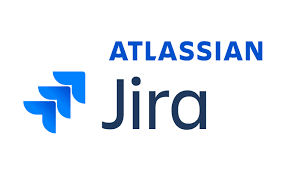Unleashing Team Collaboration with Jira
 Cloud Tuned
Cloud Tuned
Unleashing Team Collaboration with Jira
In the realm of project management and software development, effective collaboration and organization are key to success. Jira, a popular project management tool developed by Atlassian, has emerged as a cornerstone solution for teams looking to streamline their workflows, track tasks, and manage projects efficiently. In this article, we'll explore what Jira is, how it works, and why it's become an indispensable tool for teams of all sizes and industries.
What is Jira?
Jira is a powerful and versatile project management tool designed to help teams plan, track, and manage their work. Originally developed as an issue tracking system for software development, Jira has evolved into a comprehensive platform that supports a wide range of use cases, including agile project management, task tracking, bug tracking, and more. It offers flexibility and customization options to adapt to various workflows and methodologies, making it suitable for teams across different industries and domains.
How Does Jira Work?
At its core, Jira revolves around the concept of projects, issues, and workflows. Here's how it works:
Projects:
In Jira, projects serve as containers for organizing related work. Each project can be customized to reflect the specific needs and requirements of the team or organization. Projects can represent software development initiatives, marketing campaigns, IT operations, and more.
Issues:
Issues are the building blocks of work in Jira. They represent tasks, bugs, user stories, or any other unit of work that needs to be tracked and managed. Each issue is assigned a type, such as task, bug, story, epic, etc., and can contain various details, including descriptions, assignees, due dates, priorities, and attachments.
Workflows:
Workflows define the lifecycle of an issue in Jira, from creation to completion. They consist of a series of statuses (e.g., to do, in progress, done) and transitions that move the issue through different stages of work. Workflows can be customized to reflect the specific processes and methodologies used by the team.
Boards:
Boards provide visual representations of work in Jira, making it easier for teams to track and manage their tasks. There are several types of boards available in Jira, including Scrum boards, Kanban boards, and Next-Gen boards, each tailored to support different agile methodologies and workflows.
Integrations:
Jira integrates seamlessly with a wide range of tools and services, including version control systems like Git, continuous integration and continuous delivery (CI/CD) pipelines, chat applications, and more. These integrations help streamline collaboration and automate repetitive tasks, enhancing productivity and efficiency.
Why Use Jira?
The adoption of Jira offers several benefits for teams and organizations:
Centralized Work Management: Jira provides a single, centralized platform for managing all aspects of work, including tasks, bugs, user stories, epics, and more. This helps streamline communication, reduce duplication of effort, and keep everyone aligned and focused on the same goals.
Flexible and Customizable: Jira offers extensive customization options, allowing teams to tailor projects, issues, workflows, and boards to suit their specific needs and workflows. This flexibility makes Jira suitable for a wide range of use cases and industries.
Improved Visibility and Transparency: With Jira, teams gain real-time visibility into the status of work, progress towards goals, and potential blockers or bottlenecks. This transparency fosters accountability, collaboration, and informed decision-making at all levels of the organization.
Support for Agile Methodologies: Jira provides robust support for agile methodologies like Scrum and Kanban, enabling teams to plan, track, and deliver work iteratively and incrementally. Agile features such as sprint planning, backlog grooming, and burndown charts help teams stay agile and responsive to change.
Scalability and Integration: Jira scales with your team and organization, supporting small teams as well as large enterprises with thousands of users and projects. Its extensive ecosystem of plugins and integrations ensures compatibility with existing tools and systems, making it easy to extend and enhance its functionality as needed.
Getting Started with Jira
To get started with Jira, follow these steps:
Sign Up: Create an account on the Atlassian website and choose a subscription plan that suits your needs. Jira offers both cloud-based and self-hosted options, depending on your preferences and requirements.
Set Up Projects: Create projects in Jira to represent different initiatives or areas of work within your organization. Customize project settings, workflows, and permissions to align with your team's processes and requirements.
Create and Manage Issues: Start creating issues in Jira to represent tasks, bugs, user stories, epics, or any other units of work. Assign issues to team members, set due dates, prioritize work, and track progress using boards and reports.
Collaborate and Communicate: Use Jira's built-in collaboration features, such as comments, mentions, and notifications, to keep the team informed and engaged. Leverage integrations with other tools like Slack, Bitbucket, and Jenkins to streamline communication and automate workflows.
Iterate and Improve: Continuously evaluate and refine your use of Jira based on feedback, metrics, and evolving requirements. Experiment with new features, plugins, and best practices to optimize your workflows and maximize productivity.
Conclusion
Jira has become a cornerstone solution for teams and organizations looking to streamline their work management, improve collaboration, and deliver results faster and more efficiently. With its flexible and customizable features, support for agile methodologies, and seamless integrations, Jira empowers teams to plan, track, and manage their work with ease and confidence. Whether you're a software development team, a marketing department, or an IT operations team, Jira provides the tools and capabilities you need to succeed in today's fast-paced and competitive business environment.
Subscribe to my newsletter
Read articles from Cloud Tuned directly inside your inbox. Subscribe to the newsletter, and don't miss out.
Written by
